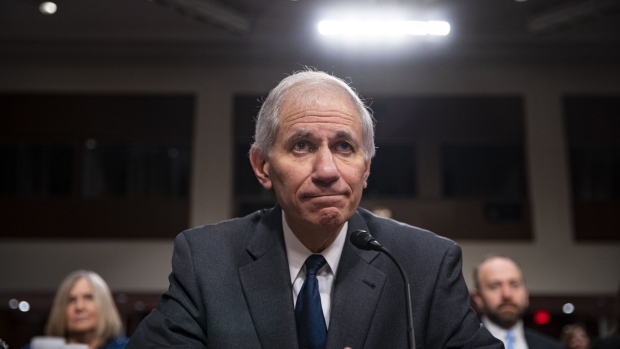May 31, 2023
FDIC Says Banks With Weaknesses Increased in First Quarter
, Bloomberg News

(Bloomberg) -- The number of banks with financial, operational or managerial weaknesses increased during the first three months of this year, according to the Federal Deposit Insurance Corp.
The FDIC said on Wednesday that the number of lenders on its confidential “Problem Bank List” increased by four to 43 between January and March. The total assets held by those lenders rose to $58 billion from $10.5 billion in the previous period, the regulator said in its Quarterly Banking Profile.
Although the number of firms on the FDIC’s list remains relatively low compared with historical highs, it’s a reversal in a trend of several consecutive quarters of declines. Wednesday’s report spans a period in which three US banks buckled, including Silicon Valley Bank and Signature Bank.
Read More: US Weighs More Business Deposit Insurance After Banks Fail
According to the FDIC, banks are placed on the problem bank list based on a key risk measure known as CAMELS. The score is based on a 1-through-5 scale, with 5 being the worst. Banks that are included have a score of 4 or 5, the regulator said.
Still, FDIC Chairman Martin Gruenberg said that the banking system remained strong. “Despite the recent period of stress, the banking industry has proven to be quite resilient,” he said in a statement. “The most lasting effects of the industry’s response to that stress may not become apparent until second quarter results,” he added.
In its report, the FDIC said banks had an “elevated level of unrealized losses on investment securities” due to increases in market interest rates. However, those losses on available-for-sale and held-to-maturity securities declined by 16.5% from the prior period to $515.5 billion, the regulator said. The watchdog said it was “closely monitoring liquidity and access to funding across the banking industry.”
Overall, banks earned more interest from loans, but they also had to pay more to depositors, which on balance led to a decline in the industry’s net interest margin, according to the regulator. The FDIC said total deposits dropped 2.5% from the fourth quarter of 2022 to $18.7 trillion — it was the largest reduction since the agency began collecting the data in 1984.
Silvergate Capital Corp. kicked off a wild three months in the banking sector on March 8 when it announced plans to wind down operations and liquidate its bank. Just two days later, Silicon Valley Bank collapsed into what was then the second-biggest failure in US history. Then on March 12, financial regulators closed Signature Bank and declared it to have failed.
The FDIC said that the amount of money in its bedrock insurance fund declined $12.1 billion to $116.1 billion at the end of the first quarter. The regulator dipped into the fund to make all depositors whole at SVB and Signature Bank and has proposed a measure to help replenish the fund by charging banks a special assessment fee.
(Updates with data on Quarterly Banking Report starting in fifth paragraph.)
©2023 Bloomberg L.P.


